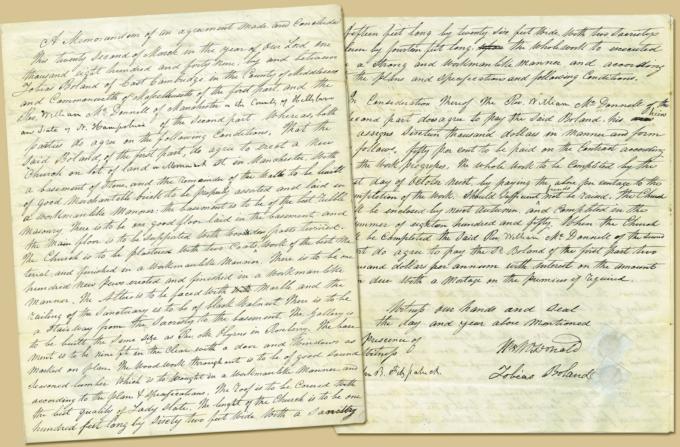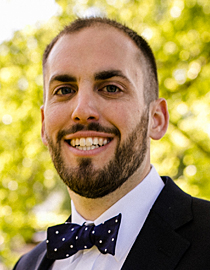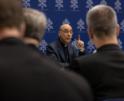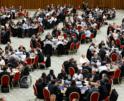
Culture

Lester
In the archive's manuscript collection is a contract dated March 22, 1849, containing the terms agreed upon by Tobias Boland of Cambridge and Father William McDonald of Manchester, New Hampshire, for the construction of a church on Merrimack Street in Manchester.
The contract calls for a church standing 100' long by 62' wide, with a sacristy 15' long by 26' wide. A stone basement of "the best rubble masonry" and nine-foot ceilings would sit below a church of brick walls finished with two coats of the best plaster available. Similarly, the contract demands all woodwork to be completed with good seasoned lumber and quality slate obtained for the roof.
Furnishings would include 100 new pews, an altar faced with marble, and an altar rail of black walnut. A stairway was to be constructed leading from the sacristy to the basement, and "the gallery is to be built with same size as Rev. Mr. O'Byrns (sic.) in Roseberry."
The document notes several times that all work was expected to be completed "in a strong and workmanlike manner" by the end of summer 1850, and in exchange, Boland would receive $16,000 in installments. Bishop John B. Fitzpatrick of Boston witnessed the agreement.
The Catholic community in New Hampshire grew slower than in other states, and the "History of the Archdiocese of Boston" states that a significant number of Catholics did not exist in Manchester until about 1839 with the development of the textile industry, notably the Amoskeag Manufacturing Company (AMC).
Reports on the growing community prompted Bishop Benedict J. Fenwick of Boston to send Father John B. Daly, OFM, an experienced missionary priest, to visit regularly. Bishop Fitzpatrick succeeded Bishop Fenwick in 1846, and first attempted to build a church there in 1847, when the AMC donated land for such a purpose. He went so far as to announce the laying of a cornerstone scheduled for Nov. 8 but cancelled the project upon receiving the deed several days before.
The land was deeded to the trustees of the future church rather than the bishop of Boston. Readers may recall that trusteeism had been a major issue early in Bishop Fitzpatrick's tenure, particularly at St. Mary, Boston, from 1841 to 1842. It allowed for lay trustees to own and operate their parish, including choosing a pastor, leaving the local bishop powerless. It led the bishop to call the first diocesan synod in 1842, gathering of all diocesan priests to debate new policies, resulting in the consensus that all diocesan property be deeded to the bishop of Boston.
Father William McDonald arrived from the Diocese of New Brunswick and was incardinated as a priest of the Diocese of Boston on June 17, 1848. After a short probationary period working with Father Patrick O'Beirne in Roxbury, he was sent to Manchester, where he resumed plans to build a church there for the city's 500 Catholics.
The land offered by the AMC was still available, but Father McDonald found that the company's motives were less than sincere. The plot was isolated on the outskirts of the city, and upon investigation he found that it was the AMC's hope the church would draw Catholic residents to the area, vacating their current neighborhoods where they were not wanted.
Finding the circumstances disagreeable, Father McDonald and Bishop Fitzpatrick searched for an alternative location. On Nov. 7, 1848, they found a Universalist Meeting House for sale, but for some unknown reason negotiations did not result in its purchase. They achieved success shortly thereafter, purchasing a lot for $12,000 where the building referenced in the contract was to be constructed.
The church was completed and dedicated to St. Anne but, despite requesting the best materials and workmanship, it has been described as "the most wretched piece of construction work." By 1852, the building had to be torn down and rebuilt.
Father McDonald would remain in Manchester until his death on Aug. 25, 1885, and would continue to build upon this early success. In 1857, he oversaw the construction of a convent occupied by the Sisters of Mercy. Two years later, he established a boys' school in the church basement and, once it moved to a grammar school building he purchased, started a girls' school there, which likewise moved to a new building he constructed. In 1874, he completed an orphanage for girls, and later a home for aged women.
Father McDonald was described as "a true priest in every respect, and to his zeal can be traced the foundations of the glorious faith of the people of that city." Fittingly, he was laid to rest beside St. Anne's Church.
- Thomas Lester is the archivist of the Archdiocese of Boston.
Recent articles in the Culture & Events section
-
'Dignitas' and the mediaRussell Shaw
-
Scripture Reflection for April 14, 2024, Third Sunday of EasterDeacon Greg Kandra
-
St. Helena's House is established in the South EndThomas Lester
-
Is this synodality?Russell Shaw
-
Poking the hornet's nest of IVFFather Tadeusz Pacholczyk


















